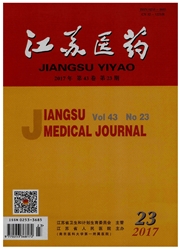

 中文摘要:
中文摘要:
背景侵略生长是 glioblastoma 的最典型的生物显型,但是在 glioma 房间侵略的分子的机制是糟糕, understood.Recent 数据证明了 microRNA 在学习试图探索涉及 glioblastoma 房间 invasion.Methods Glioma 房间侵略的控制的 miR-7 的机制的肿瘤 invasion.Our 起一个必要作用被 transwell 评估并且用 miR-7 在 miR-7 的起来规定以后抓试金模仿在 U87 和 U251 cells.Luciferase reporte
 英文摘要:
英文摘要:
Background Invasion growth is the most characteristic biological phenotype of glioblastoma, but the molecular mechanism in glioma cell invasion is poorly understood. Recent data have showed that microRNA plays an essential role in tumor invasion. Our study aimed to explore the mechanism of miR-7 involved in the control of glioblastoma cell invasion. Methods Glioma cell invasion was evaluated by transwell and scratch assays after up-regulation of miR-7 using miR-7 mimics in U87 and U251 cells. Luciferase reporter assay was used to determine focal adhesion kinase (FAK) as a target of miR-7. The levels of miR-7, matrix metalloproteinases (MMP)-2 and MMP-9 mRNA were detected by PCR assay, and the levels of FAK, MMP-2, MMP-9, total and phosphorylation serine/threonine kinase (AKT), and extracellular signal-regulated kinase (ERK) 1/2 were measured by Western blotting analysis. Results Over-expression of miR-7 inhibited the invasion and migration activity of U87 and U251 cells. And up-regulation of miR-7 reduced FAK protein expression, Further, luciferase reporter assay showed that miR-7 modulated FAK expression directly by binding 3'UTR of FAK mRNA. In addition, miR-7 repressed p-ERK1/2 and p-AKT level, MMP-2 and MMP-9 expression. Finally, the inverse relationship between FAK and miR-7 expression was certificated in human glioma tissues. Conclusion To our knowledge, these data indicate for the first time that miR-7 directly regulates cell invasion by targeting FAK in glioblastoma and that miR-7 could be a potential therapeutic target for glioblastoma intervention.
 同期刊论文项目
同期刊论文项目
 同项目期刊论文
同项目期刊论文
 miR-181b suppresses proliferation and reduces chemoresistance to temozolomide in U87 glioma stem cel
miR-181b suppresses proliferation and reduces chemoresistance to temozolomide in U87 glioma stem cel Overexpression of osteopontin induces angiogenesis of endothelial progenitor cells via the avbeta3/P
Overexpression of osteopontin induces angiogenesis of endothelial progenitor cells via the avbeta3/P 期刊信息
期刊信息
